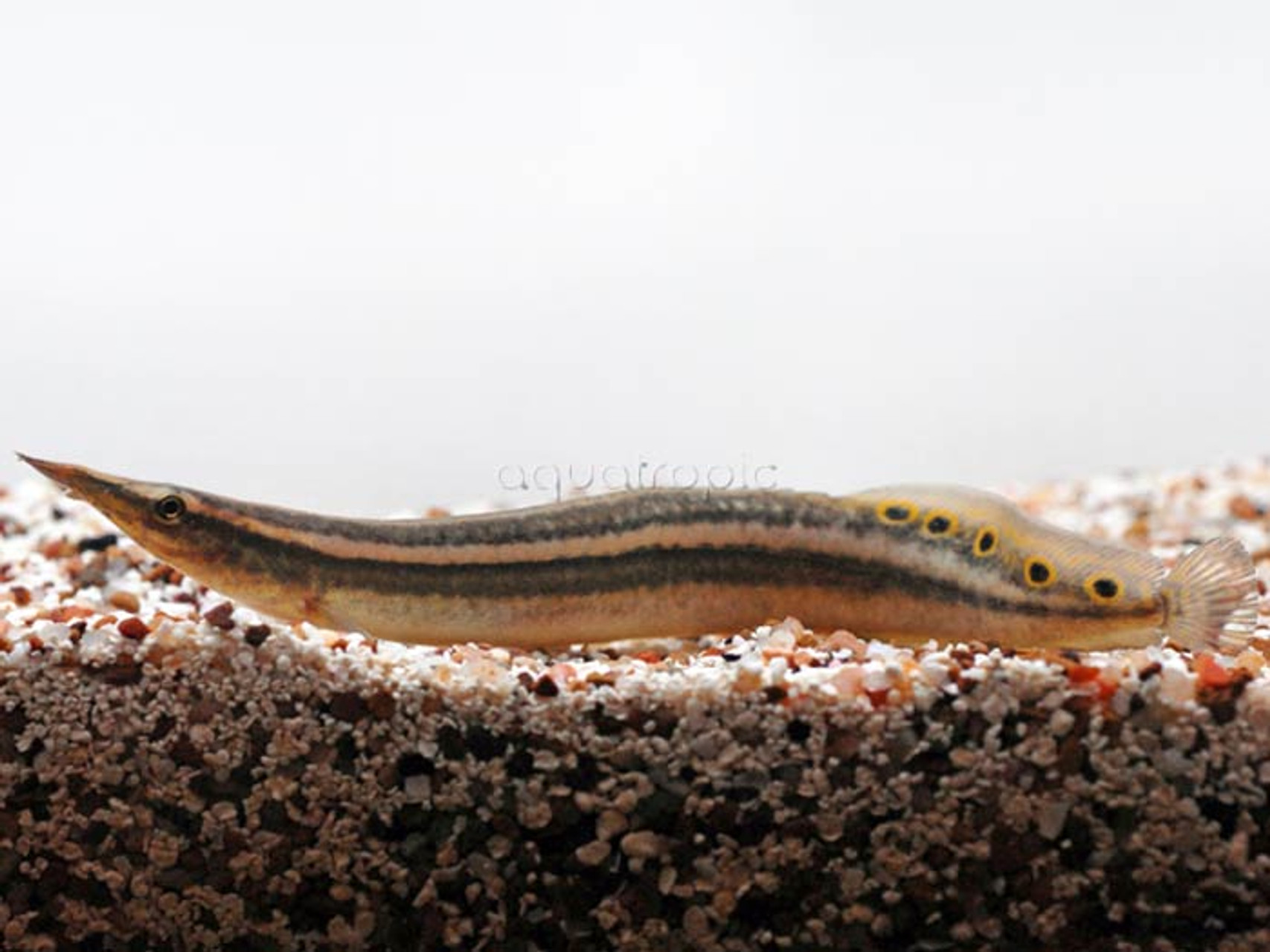Peacock Striped Eel (Mastacembelus aral)

In Greek mythology, Hera, queen of the gods, commemorated her fallen servant Argus by preserving his one-hundred eyes in the tail of the peacock. This, it is claimed, is how the peacock got its spots, but, strangely, there is no fable describing how the Peacock Striped Eel (Mastacembelus aral) or (Macrognathus aral) got its markings. Perhaps there were a few leftover Argus eyes that needed preservation?
The Peacock Eel is actually not a true eel, but, rather, belongs to an entirely different group of fishes, commonly known as spiny eels. These happen to look quite a bit like the true eels of the order Anguilliformes, but Macrognathus differs in having spines in its dorsal fin, as well as lacking the unusual “leptocephalus” larval stage found in their distant eel cousins. Another big difference relates to where these two groups occur, as most of the true eels are marine species, while the spiny eels are primarily freshwater inhabitants.
The Peacock Eel is a bit exceptional within its family, as it is known to venture into brackish estuaries at times, but it also occurs throughout a wide range of pure freshwater habitats. You’ll find it across much of Southern Asia, from India and Sri Lanka east to Myanmar.
Macrognathus aral is one of the larger members of its genus, with females said to reach nearly a foot in length, while males are reported closer to 8 inches. This is a nocturnal creature in the wild, and aquarium specimens can be expected to spend much of their day hanging out in their favorite hidey hole. Worms, crustaceans and insect larvae are the natural diet, and this should be replicated in captivity by feeding a diverse mix of frozen and live foods. Though generally very peaceful, a fully grown Peacock Eel is not above dining upon smaller tankmates, such as tetras, danios and rasboras.
This masterfully maculated mastacembelid would be a terrific choice for a Southeast Asian biotope full of larger, active fishes. Good choices would include gouramis, larger barbs and minnows (like Barilius and Dawkinsia), loaches, and giant danios.